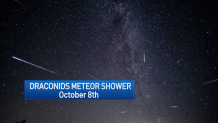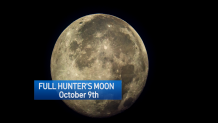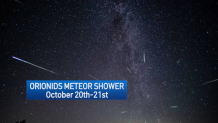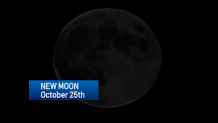There is no shortage of celestial events to be seen in the night skies over North Texas throughout the month of October.
Here’s a list of things to look for, weather permitting.
SEE THE INTERNATIONAL SPACE STATION
The International Space Station will pass across the North Texas sky this month. It will appear as a fast-moving star across the sky.
The ISS is traveling at 17,150 mph with an orbital inclination of 51.6 degrees to the earth’s equator. The station circles the globe every 90 minutes. It orbits 250 miles above the Earth.
DRACONID METEOR SHOWER

This Draconid Meteor Shower peaks on the evening of Oct. 8. The Draconids get their name from the northern constellation of Draco the Dragon, from which they appear to radiate.
This shower is caused by Earth passing through debris shed by a periodic, 1.2-mile-wide comet called 21P/Giacobini–Zinner. It last survived yet another trip around the sun in 2018 and is expected to make a return trip in 2024.
FULL HUNTER’S MOON

October has a Hunter’s Moon. It gets its name from Native Americans for this time of year when people would hunt to build up stores for winter. With the start of frost season, it’s also called the Freezing Moon and the Ice Moon.
This month’s full moon will be at its largest Oct. 9 at 3:54 p.m. You can catch it for a few days before and after.
ORIONIDS METEOR SHOWER

The Orionids Meteor Shower, created by debris left behind by Halley’s Comet, will peak on the evenings of Oct. 20 and 21. Under ideal conditions, as many as 25 meteors are visible each hour, with your best views in the hours before sunrise on the 21st.
Most meteors can be viewed from any point in the evening sky.
A NEW MOON

At the end of the month, a New Moon will peak on Oct. 25 at 5:48 a.m. This event allows many stars to glow without moonlight disruption. If you have a telescope, this is also a great opportunity to view some of the fainter galaxies and other celestial objects in the nighttime sky.
For the best viewing, move away from urban lights.